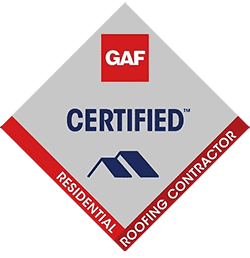Common TPO Roofing Problems – Proactive Maintenance Strategies!
When commercial building owners in Beaumont, Port Arthur, and Orange Texas decide to invest in TPO or Thermoplastic Olefin roofing, they are selecting an energy-efficient, highly durable option that has grown increasingly popular in the commercial sector; however, TPO membranes are not without their challenges like any roofing system.
Understanding the common problems that arise with TPO roofing and implementing proactive maintenance strategies can help increase the longevity and efficiency of your roof. This article will delve into the common TPO roofing issues, provide insights on maintaining your roof, and emphasize the importance of working with professional roofing companies to address potential problems early.
What is TPO Roofing?
Before we dive into the common problems that can affect TPO roofs, it is essential to understand what TPO roofing is. TPO is a single-ply roofing membrane composed of a blend of rubber and plastic materials. This makes TPO roofing incredibly durable, UV-resistant, and energy-efficient, which is why it has become such a popular choice for commercial building owners.
TPO roofing is known for its reflective properties, which help reduce cooling costs in buildings in hot climates, such as Beaumont, Port Arthur, and Orange Texas. TPO membranes are typically white or light-colored, providing excellent UV protection to reduce the heat absorbed by buildings, thus lowering air conditioning costs.
The material is also resistant to chemicals, punctures, and tears, making it an excellent choice for commercial properties that experience heavy foot traffic or are exposed to environmental elements. While TPO roofs can last up to 30 years when maintained properly, they do require periodic attention.
Below, we will look into some of the most common problems that can occur with TPO roofs and proactive maintenance strategies to help prevent these issues.
1. Seam Failures
A common problem many commercial building owners face with TPO roofing is seam failure. The seams are where the large sheets of membrane are welded together using heat. Over time, the heat-welded seams can begin to weaken due to several factors that include temperature fluctuations, improper installation, and physical stress caused by things like foot traffic or debris. If the seams fail, moisture can seep through, causing leaks that can lead to significant damage.
Proactive Maintenance Strategy:
2. Punctures and Tears
While TPO roofing is known for its resistance to punctures, it is still susceptible to damage from sharp objects or heavy foot traffic. Punctures and tears can also occur from falling debris or damage during maintenance activities. Once the membrane is punctured, water can infiltrate the roofing system, potentially causing leaks and even structural damage to the building.
Proactive Maintenance Strategy:
3. UV Damage and Discoloration
While TPO roofs are designed to withstand UV rays, prolonged exposure to the intense Texas sun can cause the membrane to degrade over time. UV damage can cause the membrane to become brittle and crack and the roof can lose its energy-efficient properties. Additionally, UV rays can cause the roof to discolor, which affects its aesthetics and may signal deterioration of the materials underneath.
Proactive Maintenance Strategy:
4. Improper Installation
One of the main reasons TPO roofs fail prematurely is improper installation. When a TPO membrane is not installed correctly, it can lead to various issues, including weak seams, poor insulation, and inadequate water drainage. Improper installation can also result in uneven surfaces, which cause stress points and may eventually lead to leaks.
Proactive Maintenance Strategy:
5. Water Pooling and Drainage Issues
TPO roofs are designed with slight slopes to encourage proper drainage; however, if there are areas of the roof with insufficient slope or blocked drainage systems, water can pool on the surface. Standing water can deteriorate the membrane, especially around seams and flashings; it can cause significant damage over time.
Proactive Maintenance Strategy:
6. Shrinkage of the Membrane
Over time, TPO membranes can experience shrinkage, particularly if exposed to extreme temperature fluctuations. When a TPO membrane shrinks, seams and flashings pull away from the surface, leading to leaks and water infiltration.
Proactive Maintenance Strategy:
7. Blistering
Blistering occurs when air or moisture becomes trapped between the layers of the TPO membrane during installation. As heat builds up, the trapped air or moisture expands, causing bubbles or blisters to form. If left unchecked, these blisters can lead to cracking, and eventually, the membrane may tear.
Proactive Maintenance Strategy:
8. Improper Maintenance Practices
Many building owners neglect regular maintenance or use improper cleaning methods on their TPO roofs. Harsh chemicals or abrasive cleaning tools can damage the membrane, causing it to crack, tear, or discolor. Neglecting routine inspections can lead to minor problems that become significant issues that require costly repairs.
Proactive Maintenance Strategy:
The Role of Roofing Companies in TPO Roof Care
When it comes to maintaining a TPO roof, working with experienced roofing companies is essential. Roofing contractors have the expertise and tools needed to properly inspect, repair, and maintain your TPO roof. They understand the intricacies of TPO roofing systems and can help you address issues before they escalate. Whether you need a minor TPO membrane roof repair or an entire section replaced, roofing companies can offer professional advice and service.
Roofing companies can also help with preventive measures, such as applying protective coatings, enhancing insulation, and reinforcing seams to improve the roof's overall performance. They can provide valuable advice on the best ways to extend the lifespan of your TPO roof, potentially saving you money in the long run.
Conclusion
TPO roofing is a popular, durable, and energy-efficient choice for commercial building owners in Beaumont, Port Arthur, and Orange Texas. Yet like any roofing system, TPO membranes require regular maintenance and attention to prevent common issues such as seam failures, punctures, UV damage, and drainage problems. By being proactive and addressing these issues early, you can extend the lifespan of your TPO roof so that your building stays protected for years to come.
Working with professional roofing companies is key to maintaining the integrity of your TPO roof. They can help you identify issues early, perform necessary repairs, and provide guidance on proactive maintenance strategies. By investing in your roof's care now, you can save on costly repairs down the road and enjoy the long-term success of your roofing system.
Key Takeaways
FAQs
1. What is TPO roofing, and why is it popular for commercial buildings in Beaumont, Port Arthur, and Orange Texas?
TPO roofing is a durable, energy-efficient single-ply membrane made from rubber and plastic. Its reflective properties help reduce cooling costs, making it an ideal choice for commercial buildings in hot climates like Beaumont, Port Arthur, and Orange Texas.
2. What are the most common problems with TPO roofing systems?
Common problems include seam failures, punctures, UV damage, improper installation, water pooling, shrinkage, blistering, and poor maintenance practices. These issues can lead to leaks and structural damage if not addressed early.
3. How do seam failures occur in TPO roofing and how can they be prevented?
Seam failures happen when heat-welded seams weaken due to temperature changes or poor installation. Regular inspections and proper installation by qualified roofing companies can prevent this issue.
4. How can punctures and tears be prevented on a TPO roof?
Keep the roof free from sharp debris and control foot traffic. Inspect the roof regularly for early signs of damage to catch minor issues before they become larger problems.
5. Can UV damage affect the performance of a TPO roof?
Yes, prolonged UV exposure can cause the membrane to crack and become brittle, reducing energy efficiency. Applying a reflective coating can help protect the roof from UV damage.
6. How can I tell if my TPO roof was installed improperly?
Wrinkles, bubbles, and poorly welded seams are signs of improper installation. To avoid these issues, the installation should be done by experienced roofing professionals.
7. What are the consequences of water pooling on a TPO roof?
Water pooling can cause membrane deterioration, especially around seams and flashings, leading to leaks. Proper drainage and regular roof inspections can prevent this issue.
8. How does shrinkage affect a TPO roof and what can I do to prevent it?
Shrinkage occurs when the membrane contracts due to temperature fluctuations, causing gaps and leaks. Regular inspections and protective coatings can help minimize shrinkage.
9. What is blistering and how can it be avoided on a TPO roof?
Blistering happens when air or moisture gets trapped under the membrane, causing bubbles that can lead to cracks. Proper installation in moderate temperatures and moisture control can prevent blistering.
10. Why should I hire professional roofing companies for TPO roof maintenance and repairs?
Professional roofing companies have the expertise to spot early signs of damage and make sure your TPO roof is properly maintained. They can perform repairs and install protective coatings to extend the life of your roof.
- Inspect the seams regularly: Look for signs of separation, cracking, or other visible damage.
- Ensure proper installation: Hire an experienced roofing company for the initial installation and any subsequent repairs. Properly heat-welded seams are crucial for the roof's performance.
- Keep the roof clear of debris: Make sure that the roof is free of sharp objects or debris that can cause unnecessary stress on the seams.
- Inspect after weather events: Check the seams after storms, especially heavy rain or wind, to see if they have remained intact.
- Keep the roof free of debris: Be certain that there is no sharp debris or objects on the roof that could puncture or damage the membrane.
- Inspect for small punctures: Even small punctures or tears should be addressed immediately to prevent them from worsening. Small cracks can be repaired before they lead to more significant issues.
- Control foot traffic: Limit foot traffic to the necessary personnel to reduce the chances of damaging the membrane. When foot traffic is required, be sure that those walking on the roof know the precautions they must take to avoid causing damage.
- Schedule regular inspections: Professional roofing companies can perform in-depth inspections to identify potential risks and perform necessary repairs.
- Monitor for UV degradation: Regularly inspect the roof for signs of cracking, discoloration, or brittleness. Early detection can prevent more significant damage later.
- Apply a reflective coating: Adding a reflective coating to your TPO roof can help protect the membrane from UV rays, reduce heat absorption, and prolong its lifespan.
- Clean the roof regularly: Accumulated dirt, debris, and pollutants can intensify UV damage so make sure the roof is kept clean to maintain its protective qualities.
- Choose a reliable roofing company: Proper installation is critical to the longevity of a TPO roof. Be certain that the roofing company you hire has experience with TPO roofing systems and is familiar with the manufacturer's installation guidelines.
- Validate proper warranty coverage: There could be warranty implications if the roof was installed improperly. Verify that the installation is covered by warranty, and have a professional review the work if you suspect issues.
- Look for signs of poor workmanship: After installation, keep an eye out for wrinkles, bubbles, or uneven seams that may indicate poor workmanship.
- Ensure proper slope: TPO roofs should be designed with adequate slope to facilitate water flow. If there are areas where water tends to pool, have a roofing company assess the situation and consider making adjustments to the slope.
- Clear debris from drainage systems: Regularly inspect and clear gutters, downspouts, and drains so that water can flow freely off the roof.
- Inspect for pooling water: After heavy rain, check for areas of standing water. If pooling is present, have it addressed immediately to prevent long-term damage.
- Inspect for signs of shrinkage: Look for gaps between seams or around flashings. If you notice any shrinkage, it is best to address the issue as soon as possible.
- Apply a protective coating: A reflective coating can help reduce the effects of temperature fluctuations, which are one of the leading causes of shrinkage.
- Regular inspections: Schedule annual or semi-annual roof inspections by a professional roofing company to detect shrinkage early.
- Identify blisters early: Inspect the roof regularly for signs of blisters or bubbles. If blisters are detected, a roofing professional should address them to prevent further damage.
- Be sure of proper installation: Proper installation practices can help minimize the chances of blistering. Hire a reliable roofing company to see that the membrane is installed correctly.
- Avoid extreme temperatures during installation: Make sure that the membrane is installed during moderate temperatures to minimize the risk of blistering due to excessive heat.
- Follow manufacturer guidelines: Always adhere to the manufacturer's recommended maintenance practices so that your TPO roof stays in optimal condition.
- Use gentle cleaning methods: Avoid using abrasive materials or harsh chemicals to clean the roof. Instead, use soft-bristled brushes and non-abrasive cleaners to maintain the membrane.
- Schedule professional inspections: Regularly schedule professional roofing inspections to catch minor issues before they turn into significant problems. Roofing companies have the tools and expertise to spot potential issues that you may miss.
- While durable, TPO roofing systems require proactive maintenance to prevent common problems such as seam failures, punctures, UV damage, and drainage issues.
- Regular inspections and repairs are crucial to maintaining the effectiveness of your TPO roof.
- Working with professional roofing companies ensures proper installation and maintenance, which can extend the life of your roof.
- Simple maintenance strategies, such as keeping the roof clean, inspecting for damage, and reinforcing seams, can prevent many common issues.
- Scheduling professional roof inspections at least once a year can help you catch problems early and avoid costly repairs in the future.
Subscribe to High & Tight Roofing's Blog



Comments